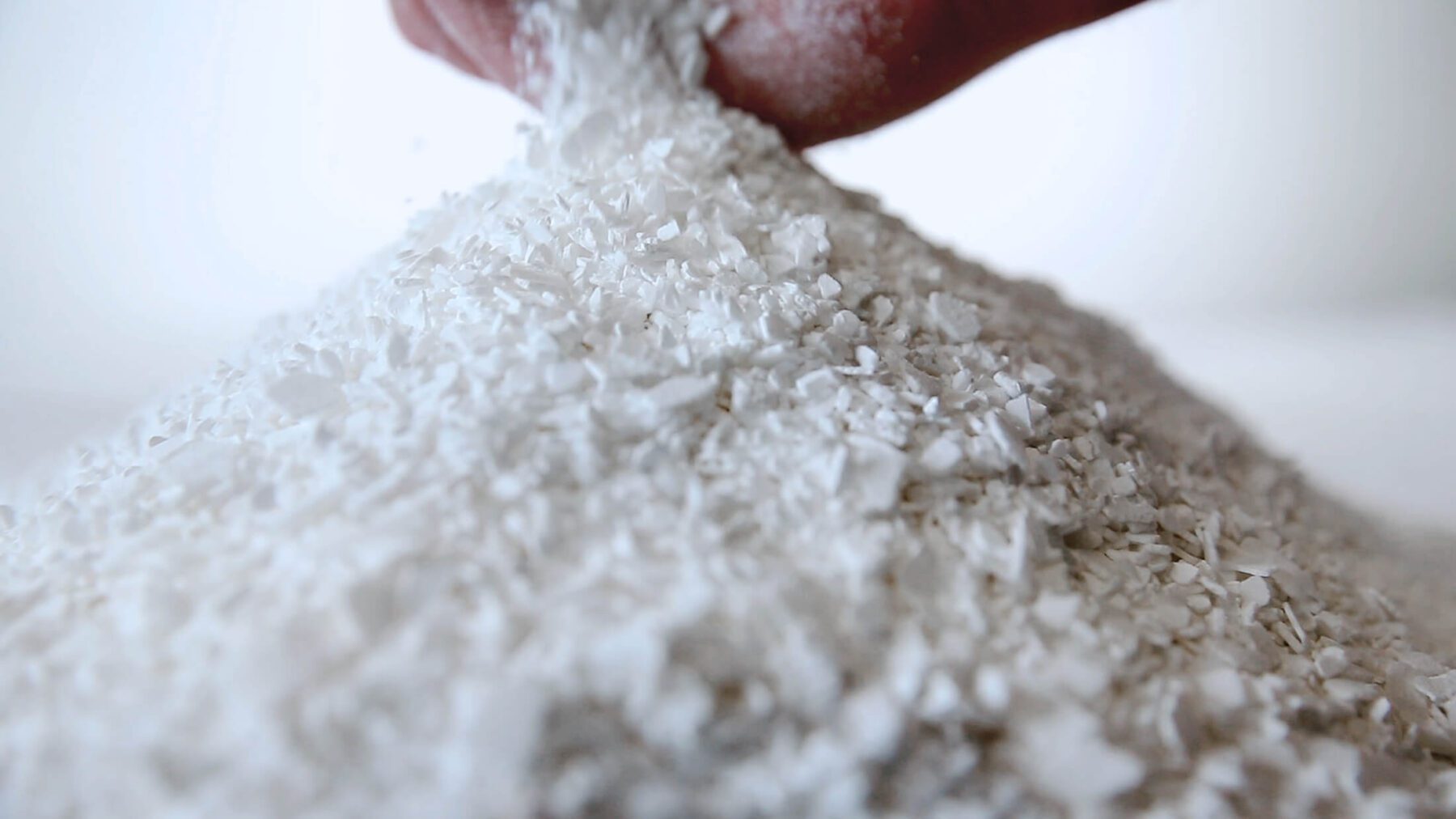Calcium chloride’s function in Concrete
Calcium chlorides is used as accelerator in hydration process of cement, leading to quick set of concrete and to get high initial strength concrete. Maximum permissible limit of addition of calcium chloride is 2% in flake form.
Methods of Adding Calcium Chloride
Calcium chloride is available as pellets or other granules, flakes, or in solution form. The regular flake form contains a minimum of 77 percent calcium chloride and the pellet and other granular forms a minimum of 94 percent. As all forms of calcium chloride are soluble in water, it is recommended to use it in solution form.
Care must be taken that the solution is not brought in contact with the cement directly, as this leads to quick set of cement. So, it is recommended to be diluted in water and mixed with aggregate.
Advantages of Using Calcium Chloride in Concrete
- High initial strength
- Reduced final set time.
- Reduced bleeding
- Improved workability
- Fast form work turnaround
- Cost effectiveness
- Beneficial when used with fly ash.
Here’s a more detailed look at the role of calcium chloride in concrete:
Accelerating Setting Time: The primary role of calcium chloride in concrete is to accelerate the setting time, making it a valuable admixture, especially in colder climates. It speeds up the rate at which the concrete hardens, allowing construction projects to proceed more quickly.
Reducing Freezing Point: Calcium chloride can lower the freezing point of water, which can be beneficial when working with concrete in freezing conditions. This can help to prevent the water in the concrete mix from freezing before the concrete has had a chance to set.
Increasing Strength: By accelerating the hydration process, calcium chloride can also help to increase the early strength of the concrete. This can be beneficial in situations where the concrete needs to be able to withstand loads shortly after being poured.
However, it’s important to note that while calcium chloride can have these benefits, it also has some potential downsides:
Corrosion: Calcium chloride can contribute to the corrosion of steel reinforcement in concrete, which can lead to structural problems over time. This is a significant concern and is one of the reasons why the use of calcium chloride is often limited or avoided in reinforced concrete.
Discoloration: Calcium chloride can also lead to discoloration in concrete, which can be an aesthetic concern.
Shrinkage: There’s some evidence to suggest that the use of calcium chloride can increase the shrinkage of concrete as it dries, which can lead to cracking.
Because of these potential issues, the use of calcium chloride in concrete should be carefully considered and should follow the guidelines set out by organizations like the American Concrete Institute.
Disclaimer: This content is provided solely for your review. Erusu Consultants takes no liability for this article. The reader is advised to form their own opinion. Please consult a Structural Engineer before making any final decisions.






